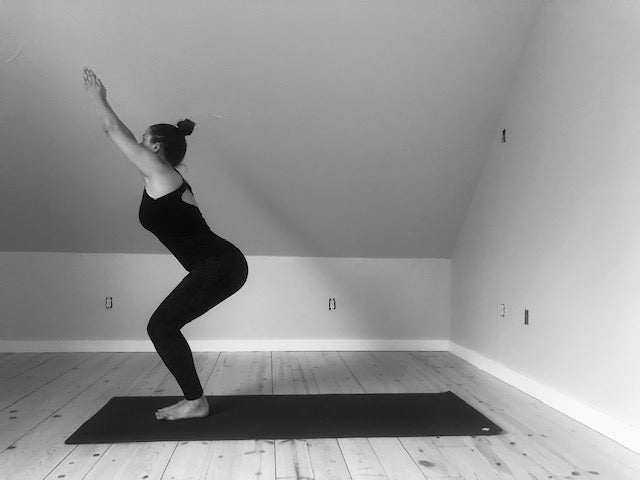
Surya Namaskar B: An Ayurvedic Guide to Sun Salutation B
Similar to Surya Namaskar A, Surya Namaskar B, or Sun Salutation B, is a series of postures linked together with the breath. Sun Salutes are traditionally practiced in the morning to greet the new day and awaken the body and mind. Sun Salutations dispel the doshas from the spine, increase the downward moving energy of apana vayu, improve digestion, increase circulation, strengthen and stretch the body, reduce weight and promote vitality. Surya Namaskar B is particularly beneficial in building internal heat quickly and is considered to be more strengthening and challenging compared to Surya Namaskar A. This being said, it is recommended to warm up with Surya Namaskar A then follow it with Surya Namaskar B.
Surya Namskar A & B can be completed as a stand alone practice or can be a warm up to a longer Yoga practice. Traditionally in Ashtanga Yoga, it is recommended that you complete 3 cycles of Surya Namaskar B in order to warm the body prior to moving into deeper postures.
Looking at sun salutations from the Ayurvedic lens, this flowing series is beneficial for all three doshas; yet, each dosha should approach sun salutations with a unique set of guidelines in mind:
Vata- It is best for vata types or people experiencing excess vata to move slowly through Surya Namaskar B with awareness of the strength of the physical body as well as experiencing the grounding quality of the breath. Since vata tends to increase mobility, to counterbalance this, take an extra cycle of breath or two in each posture in order to slow down and connect with oneself. You can even omit the ‘vinyasa’, moving from chaturanga dandasana to urdvha mukha svanasana, in order to reduce the movement in this fluid sequence. Instead, hold Plank Pose and move directly into Downward Facing Dog.
Pitta- Due to the heating quality of Surya Namaskar B, pitta types or people experiencing excess pitta, should move slowly with attention to a smooth and calm breath. Sun salutations have the ability to expel excess heat from the body as its movements massage the digestive organs. In short, the purifying aspect of this series is beneficial for balancing pitta dosha. We recommend the practitioner move slowly and calmly through the series, letting go of self-judgement and releasing the need to compete with oneself or anyone else who may be practicing in the room. Lastly, we recommend a maximum of three rounds of Surya Namaskar B for a pitta pacifying practice.
Kapha- Quite the opposite of vata and pitta style sun salutations, kapha types or people working to balance excess kapha, should move swiftly and efficiently through Surya Namaskar B. Allow one breath per movement and welcome the cardiovascular component of the series into your body in order to break up congestion and move stagnant kapha out of your system. Sun salutes are one of the best ways to get kapha moving and uplift the senses; thus, we highly recommend this flow for balancing kapha dosha.
How to Do Surya Namaskar B:
1. Tadasana (Mountain Pose)


Inhale, and simultaneously bend the knees like you are sitting in an imaginary chair and reach the arms up and overhead and bring the palms together. Keep the gaze upward towards the hands and firm the thighs.
3. Uttanasana (Standing Forward Fold)

Exhale, hinge at the hips, draw your hands through a prayer position and into a standing forward fold. Press the palms into the floor and bend the knees if necessary. Relax the neck and gaze towards the back of your mat. Continue to firm through the legs.
4. Ardha Uttanasana (Half Standing Forward Fold)

Keep the palms pressed to the floor and with an inhale, lift the head and lengthen through the spine. Bring the gaze down and slightly forward.
5. Phalakasana (Plank Pose)*

With your next exhalation, step or hop back to plank pose. Have the palms flat on the floor and underneath the shoulders. The feet are hip distance apart and engage the legs. Have the gaze down on the mat. Take a full breath in and lengthen the neck and spine.
*As an alternative, you can keep the knees on the floor in Plank Pose.
6. Chaturanga Dandasana (Four Limbed Staff Pose)*

Exhale, bend the elbows and keep them drawn into the ribs, or the midline of the body, to slowly lower half way down and hold. Keep the legs strong and press back through your heels.
*As an alternative, you can keep the knees on the floor for Four Limbed Staff Pose.
7. Urdhva Mukha Svanasana (Upward Facing Dog)

Inhale, roll over the toes, straighten the arms and come into Upward Facing Dog. In this posture, the palms, knuckles and fingers firmly root into the mat while the shoulder blades squeeze together and move down the back. Press into the tops of the feet and lift the thighs up and away from the mat. Lengthen the tailbone toward the heels and expand the heart open. If possible, lift the gaze up towards the ceiling or sky.
8. Adho Mukha Svanasana (Downward Facing Dog)

Exhale, tuck the toes, lift the hips up and back into Downward Facing Dog. Continue to ground the palms, knuckles and fingers into the mat and move the shoulders away from one another and down the back. Bring your gaze towards the navel center. Lengthen through the spine, engage through the thighs, open through the hamstrings and draw the heels of the feet towards the mat.
9. Virabhadrasana I (Warrior I)

Inhale and simultaneously spin the left foot down to a forty five degree angle and step the right foot forward into Warrior I. Bend the right knee so it is directly over the right ankle and reach the arms up and overhead. Lift the gaze upward towards the hands and continue to press back into the outer edge of the left foot.
10. Phalakasana (Plank Pose)*

With your next exhalation, plant the hands to the floor and step to plank pose, with the palms flat on the floor and underneath the shoulders. The feet are hip distance apart and engage the legs. Bring the gaze down on the mat. Take a full breath in as you lengthen the neck and spine.
*As an alternative, you can keep the knees on the floor for Plank Pose.
11. Chaturanga Dandasana (Four Limbed Staff Pose)*

Exhale, bend the elbows and keep them drawn into the ribs, or the midline of the body, to slowly lower half way down and hold. Keep the legs strong and press back through your heels.
*As an alternative, you can keep the knees on the floor for Four Limbed Staff Pose.
12. Urdhva Mukha Svanasana (Upward Facing Dog)

Inhale, roll over the toes, straighten the arms and come into Upward Facing Dog. In this posture, the palms, knuckles and fingers firmly root into the mat while the shoulder blades squeeze together and move down the back. Press into the tops of the feet and lift the thighs up and away from the mat. Lengthen the tailbone toward the heels and expand the heart open. If possible, lift the gaze up towards the ceiling or sky.
13. Adho Mukha Svanasana (Downward Facing Dog)

Exhale, tuck the toes, lift the hips up and back into Downward Facing Dog. Continue to ground the palms, knuckles and fingers into the mat and move the shoulders away from one another and down the back. Bring your gaze towards the navel center. Lengthen through the spine, engage through the thighs, open through the hamstrings and draw the heels of the feet towards the mat.
14. Virabhadrasana I (Warrior I)

Inhale and simultaneously spin the right foot down to a forty five degree angle and step the left foot forward to Warrior I. Bend the left knee so it is directly over the left ankle and reach the arms up and overhead. Lift the gaze upward towards the hands and continue to press back into the outer edge of the right foot.
15. Phalakasana (Plank Pose)*

With your next exhalation, plant the hands to the floor and step to plank pose, with the palms flat on the floor and underneath the shoulders. The feet are hip distance apart and engage the legs. Bring the gaze down on the mat. Take a full breath in as you lengthen the neck and spine.
*As an alternative, you can keep the knees on the floor for Plank Pose.
16. Chaturanga Dandasana (Four Limbed Staff Pose)*

Exhale, bend the elbows and keep them drawn into the ribs, or the midline of the body, to slowly lower half way down and hold. Keep the legs strong and press back through your heels.
*As an alternative, you can keep the knees on the floor for Four Limbed Staff Pose.
17. Urdhva Mukha Svanasana (Upward Facing Dog)

Inhale, roll over the toes, straighten the arms and come into Upward Facing Dog. In this posture, the palms, knuckles and fingers firmly root into the mat while the shoulder blades squeeze together and move down the back. Press into the tops of the feet and lift the thighs up and away from the mat. Lengthen the tailbone toward the heels and expand the heart open. If possible, lift the gaze up towards the ceiling or sky.
18. Adho Mukha Svanasana (Downward Facing Dog)

Exhale, tuck the toes, lift the hips up and back into Downward Facing Dog. Continue to ground the palms, knuckles and fingers into the mat and move the shoulders away from one another and down the back. Bring your gaze towards the navel center. Lengthen through the spine, engage through the thighs, open through the hamstrings and draw the heels of the feet towards the mat. Take 5 rounds of breath.
19. Ardha Uttanasana (Half Standing Forward Fold)

Inhale and step the feet towards the front of your mat and back into Half Standing Forward Fold.
20. Uttanasana (Standing Forward Fold)

Exhale, release the head and come into Standing Forward Fold.
21. Utkatasana (Chair Pose)

Inhale, and simultaneously bend the knees, like you are sitting in an imaginary chair, reach the arms up and overhead and bring the palms together. Keep the gaze upward towards the hands and firm the thighs.
22. Urdhva Hastasana (Raised Hands Pose)

Inhale, straighten the legs and continue to reach the arms up and overhead with the palms pressed together. Continue to lift the gaze upward towards the hands. Draw the shoulders down the back.
23. Tadasana (Mountain Pose)

Exhale, bring the hands by your sides, bring the chin parallel with the ground and gaze is forward.
Repeat this sequence ‘on the opposite side’. This means that instead of stepping the right foot forward first for Warrior I, instead, step the left foot forward first for Warrior I. For the second Warrior I on this side, step the right foot forward first. Once this side is complete, you have completed one full round of Surya Namaskar B.
Precautions:
-It is best to learn any yoga posture, including Surya Namaskar B, under the supervision of a live Yoga teacher. This way, the teacher can help correct alignment which will decrease the chances of you developing faulty or harmful habits in your Yoga practice.
-Please consult a physician before you begin any exercise practice, including Yoga.
Contraindications for Surya Namaskar B:
-If you have chronic or acute back pain or high blood pressure, please consult a physician before you practice Surya Namaskar B.

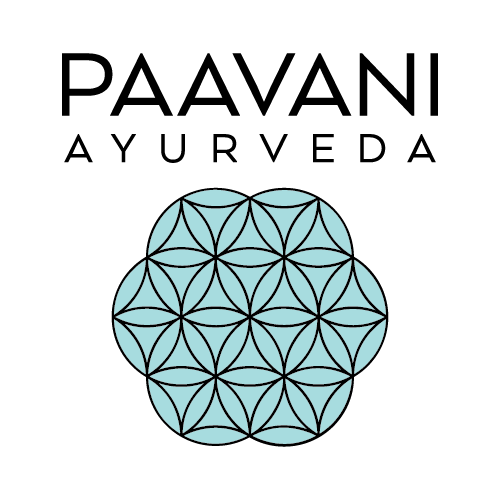
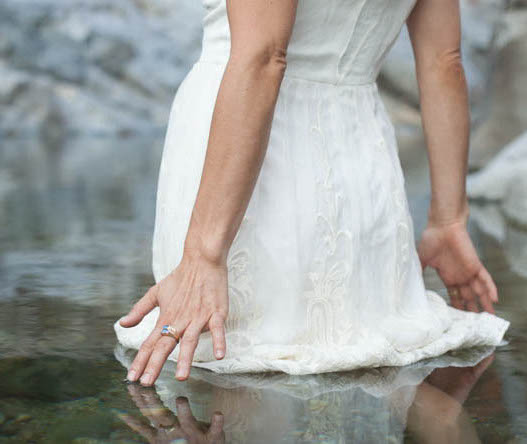
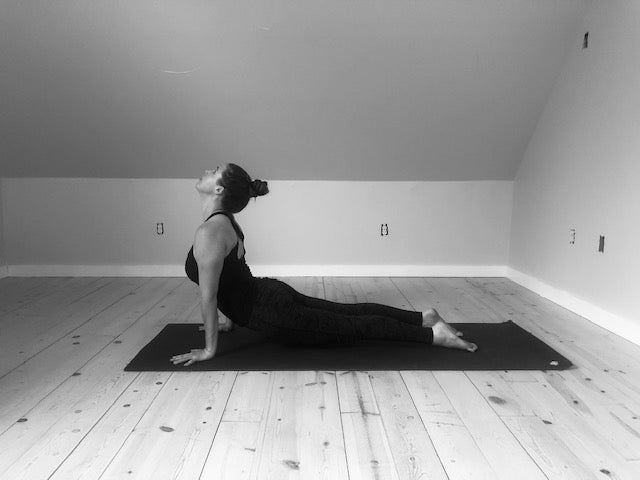
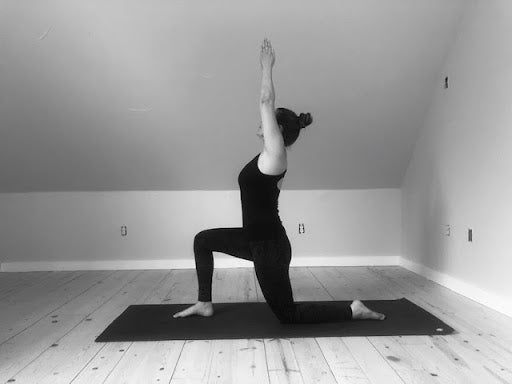
Leave a comment
This site is protected by hCaptcha and the hCaptcha Privacy Policy and Terms of Service apply.